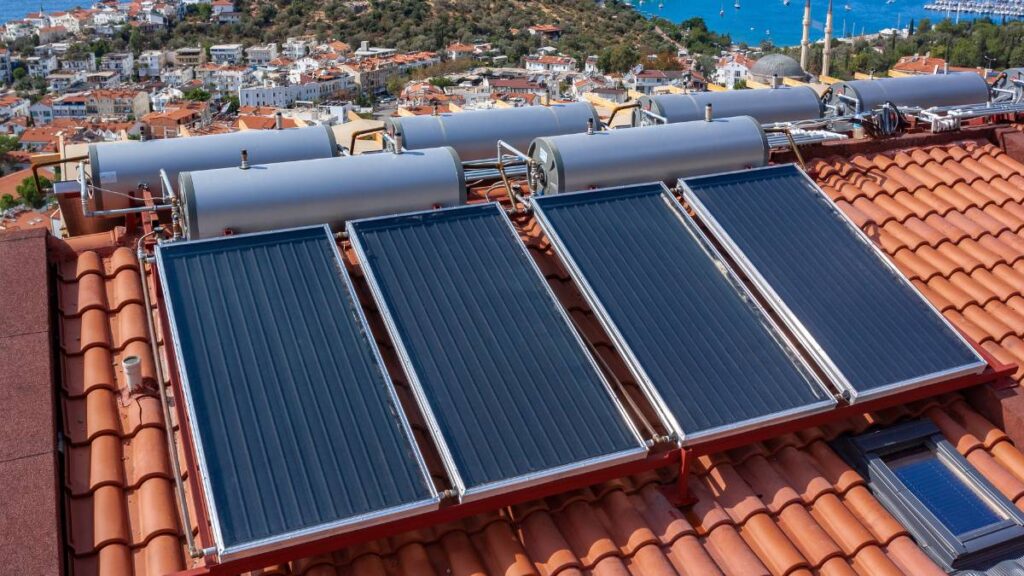Did you know that a single ocean current carries more energy than all the world’s rivers combined? Ocean current energy stands as a formidable yet underutilized source of marine renewable energy. This clean, reliable power source, driven by the perpetual motion of ocean currents, promises a future with minimal environmental impact and sustainable energy production.
What is Ocean Current Energy?
Ocean current energy, also known as current energy, is a form of renewable energy that harnesses the kinetic energy of ocean currents to generate electricity. These currents are the continuous flow of water in a particular direction, driven by factors such as wind, temperature differences, and the Earth’s rotation. By capturing the energy from these natural movements, ocean current energy offers a promising solution for sustainable power generation.
Unveiling Ocean Currents
Ocean currents are massive, circulating water movements across the globe, propelled by wind, temperature variations, and salinity gradients. These currents’ strength and predictability are influenced by global circulation patterns, making them a potent source of energy. The world’s total ocean current power is estimated at 5,000 GW, with areas like the Florida Straits exhibiting energy densities around 1 kW/m2. Harnessing even a fraction of this energy could significantly impact regional power supplies, illustrating the vast potential of ocean current energy.
How Does Ocean Current Energy Differ from Other Forms of Renewable Energy?
Unlike other forms of renewable energy such as wind and solar power, ocean current energy is not dependent on weather conditions or sunlight. This means that it can provide a consistent and reliable source of electricity, making it a valuable addition to the renewable energy mix. Additionally, ocean currents have a higher energy density compared to other renewable resources, allowing for the potential generation of significant amounts of power.
Technologies for Ocean Current Energy
Technological innovations for capturing ocean current energy include:
- Underwater Turbines: Similar to wind turbines, these devices convert the kinetic energy of water flow into electricity.
- Kite Systems: These are underwater structures tethered to the seabed, generating power as they move with the ocean currents.
Another method involves utilizing ocean thermal energy, where temperature differences in the ocean are used to generate power through a thermodynamic cycle.
Advantages of Ocean Current Energy
Ocean current energy offers several advantages:
- Predictable and Clean: It provides a constant, clean energy source, unlike intermittent renewables like solar and wind.
- Consistent Power: The steady nature of ocean currents ensures a reliable power supply.
- Minimal Environmental Disruption: Underwater devices have less impact on marine life and are visually unobtrusive compared to other energy structures.
Challenges And Limitations of Harnessing Ocean Current Energy
Despite its potential, ocean current energy also faces several challenges and limitations. Challenges in this sector include:
- Economic Factors: The high cost of technology development and deployment is a significant barrier.
- Geographic Limitations: Only specific locations with strong, stable currents are suitable for energy extraction.
- Technical Development: Enhancing the efficiency and durability of underwater devices remains a key challenge.
Furthermore, the potential impacts on marine ecosystems and wildlife must be carefully considered and mitigated.
Environmental Impact and Sustainability
The Minimal Environmental Impact of Ocean Current Energy
One of the key advantages of ocean current energy is its minimal environmental impact. Unlike traditional energy sources such as fossil fuels, ocean current energy does not produce greenhouse gas emissions or contribute to air or water pollution. Additionally, the infrastructure for harnessing ocean currents can be designed to minimize disturbance to marine habitats and ecosystems, ensuring a more sustainable approach to power generation.
Advancements in Ocean Current Technology
Research is underway to:
- Improve Efficiency: Develop cost-effective turbines and kites with enhanced performance.
- Material Advancements: Explore materials that withstand harsh ocean conditions for longer-lasting equipment.
- Design Optimization: Focus on designs that have minimal ecological impact.
The Global Potential of Ocean Current Energy
Globally, pilot projects demonstrate ocean current energy’s viability, with regions actively exploring this technology including the European Union, Japan, the United States, and China. The support of government policies and public backing is crucial for the further development of this sustainable energy source.
Conclusion
Ocean current energy, with its promise of clean, reliable power, represents a significant stride towards a sustainable energy future. The journey from concept to widespread implementation is paved with challenges, yet the ongoing advancements in technology and global interest highlight its vast potential. As we delve deeper into the possibilities of ocean current energy, the call to action becomes clear: learn, support, and advocate for the development of this profound energy resource, ensuring a sustainable and environmentally harmonious future.







